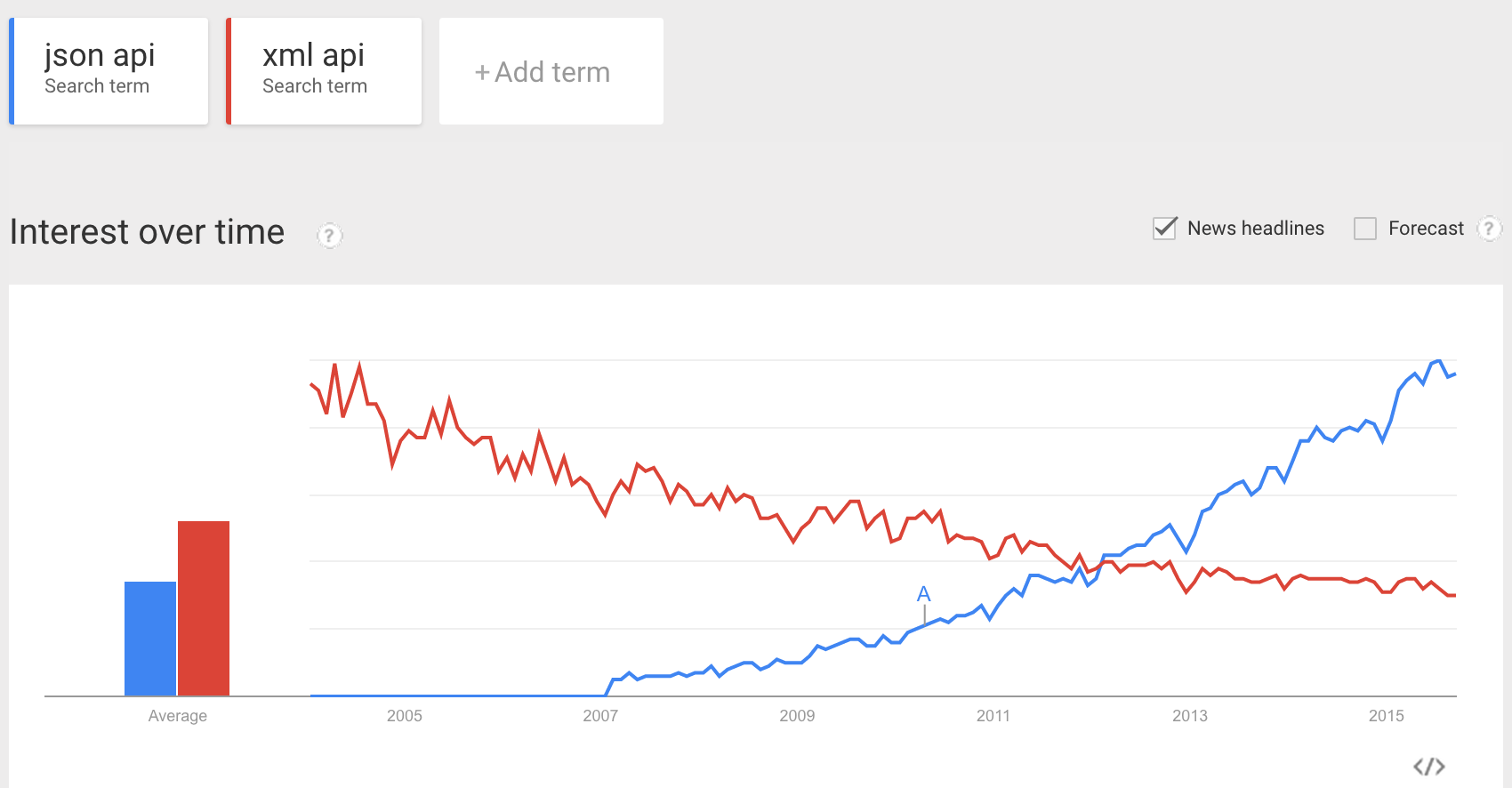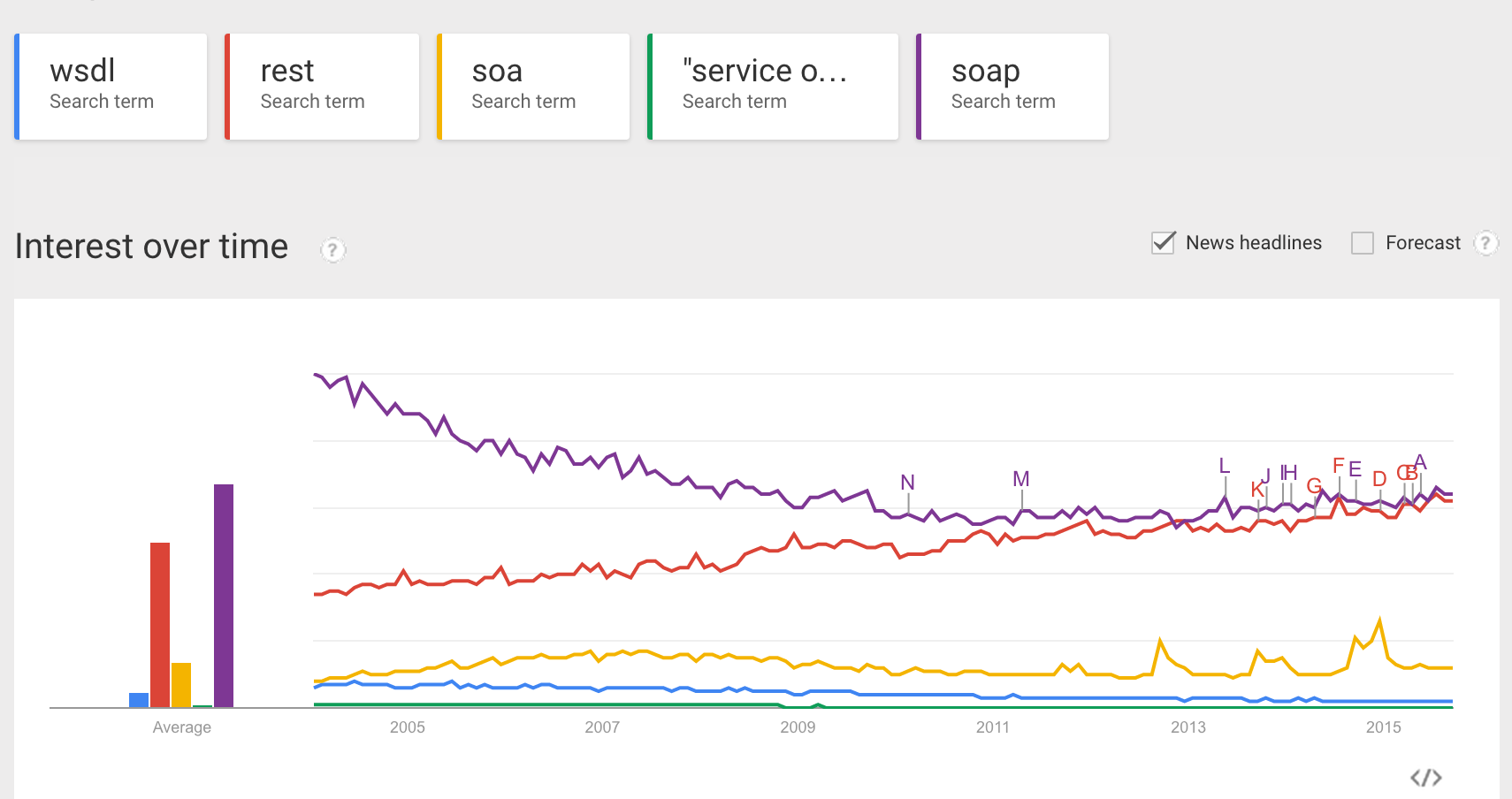MORE REST
Petri Ihantola
Trends?
XML vs. JSON

Rest vs SOA etc.

However
Your customers, their environment, etc.
vs. global trends.
Rest best practices
continues from yesterday
Resources are nouns, use plurals only to keep it simple.
/books//book/42/books/42
Rest best practices (continues from yesterday)
| GET | POST | PUT | DELETE | |
| /books | ??? | ??? | ??? | ??? |
| /books/42 | ??? | ??? | ??? | ??? |
Rest best practices
| GET read |
POST create |
PUT update |
DELETE | |
| /books | Returns a list of books | Create a new book | Bulk update of books | Delete all books! |
| /books/42 | Returns a specific book | Method not allowed (405) | Updates a specific book | Deletes a specific book |
HTTP Return codes
See, e.g., http://www.restapitutorial.com/httpstatuscodes.html
Rest best practices
You can use sub-resources for relations
GET /books/42/authors/
GET /authors/
Rest best practices
HTTP headers communicating serialization format
- Content-Type defines the request format.
- Accept defines a list of acceptable response formats.
Rest best practices
Authentication and authorization are different. Remember to do both.
There are many other good practices related to designing REST APIs. Some bad practices are also listed, e.g., https://jacobian.org/writing/rest-worst-practices/
Is there anything like WSDL but for REST
Or do I need such?
Web Application Description Language (WADL)
- An XML-based language
- Assumes HTTP
- Uses hyperlinks for linking resources
- Development both language and platform neutral
- Aligned with REST terminology
WADL elements
- Set of resources: Analogous to a site map showing the resources on offer.
- Relationships between resources: Describing the links between resources, both referential and causal.
- Methods that can be applied to each resource: The HTTP methods that can be applied to each resource, the expected inputs and outputs and their supported formats.
- Resource representation formats: The supported MIME types and data schemas in use
WADL in Real
Yahoo has a nice demo: https://developer.yahoo.com/blogs/ydn/check-wadl-7130.html
WADL example
<application xmlns="http://wadl.dev.java.net/2009/02"
xmlns:ns="http://superbooks">
<grammars>
...
</grammars>
<resources base="http://localhost:8080/">
...
<resource path="/books">
<resource path="/bookstore/{id}">
<param name="id" style="template"/>
<method name="GET">
<response>
<representation mediaType="application/xml" element="ns:thebook"/>
</response>
</method>
</resource>
</resource>
</resources>
</application>
...WADL example
<grammars>
<xs:schema xmlns:xs="http://www.w3.org/2001/XMLSchema"
xmlns:tns="http://superbooks" attributeFormDefault="unqualified" elementFormDefault="unqualified"
targetNamespace="http://superbooks">
<xs:element name="thebook" type="tns:book"/>
<xs:complexType name="book">
<xs:sequence>
<xs:element minOccurs="0" ref="tns:thechapter"/>
<xs:element name="id" type="xs:int"/>
</xs:sequence>
</xs:complexType>
</xs:schema>
</grammars>
WADL Tools Support etc
- GlassFish – Sun Java EE 7 Application Server: https://glassfish.java.net/ Support for RESTful Web Services and automatic generation of WADL files from Java code WADL2JAVA https://wadl.java.net/wadl2java.html
- Web Application Description Language (WADL) spec., W3C http://www.w3.org/Submission/wadl/
However, WADL is still not widely adopted.